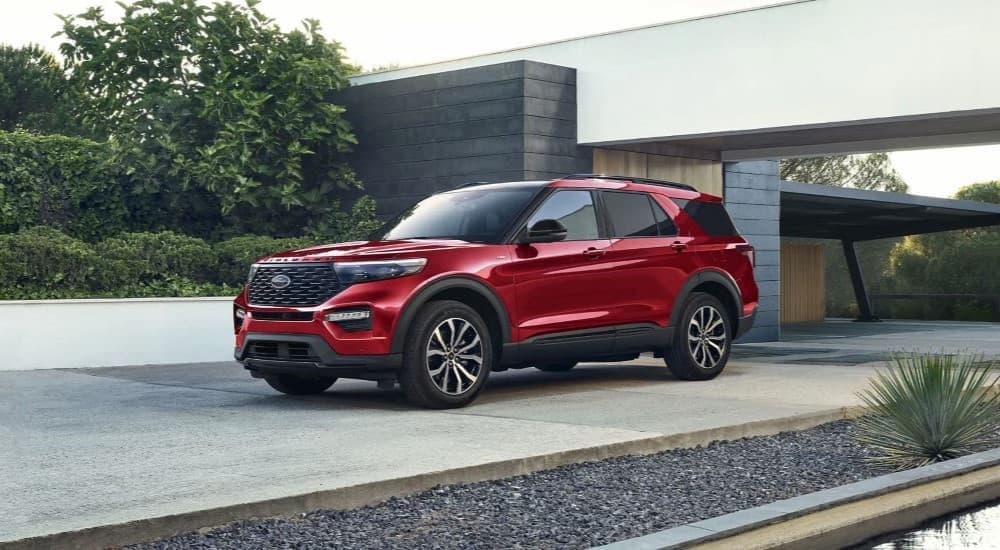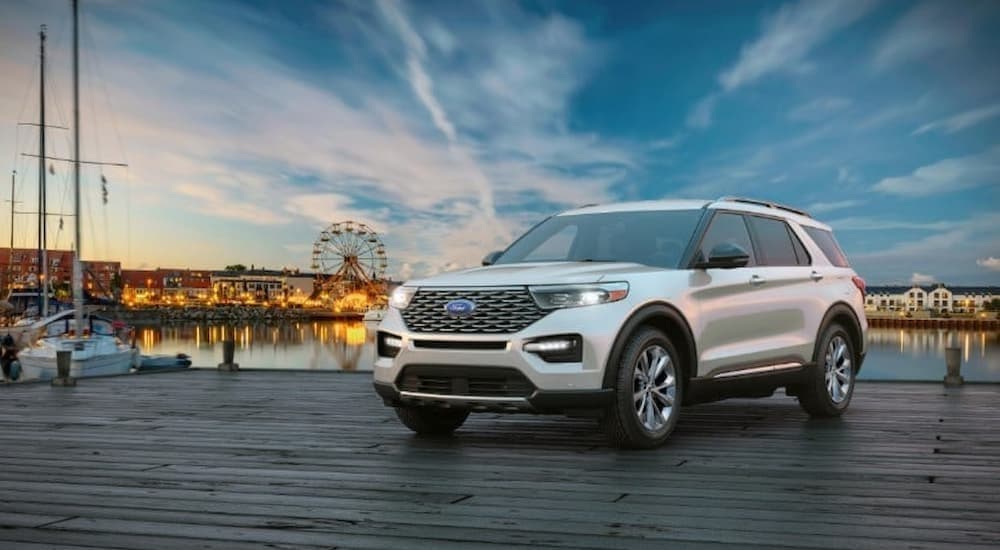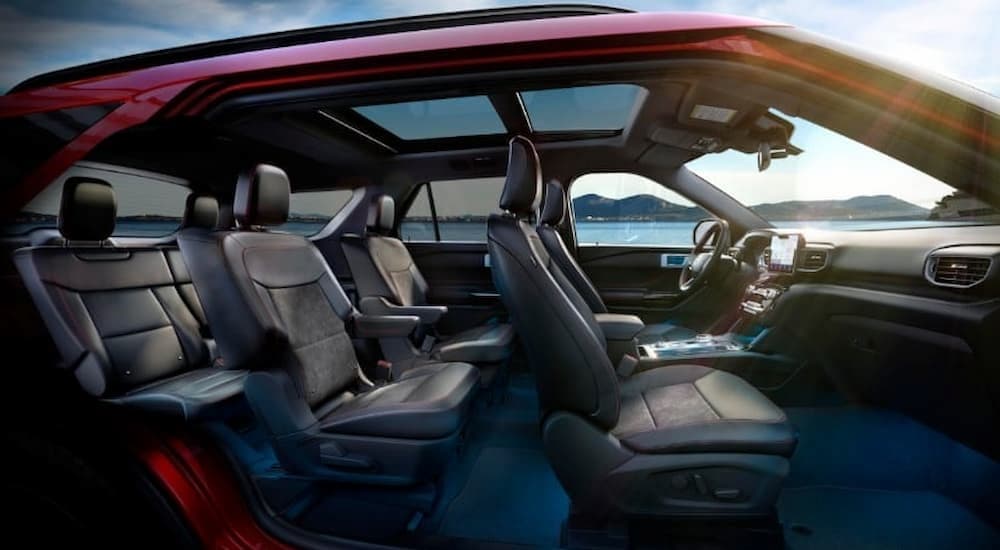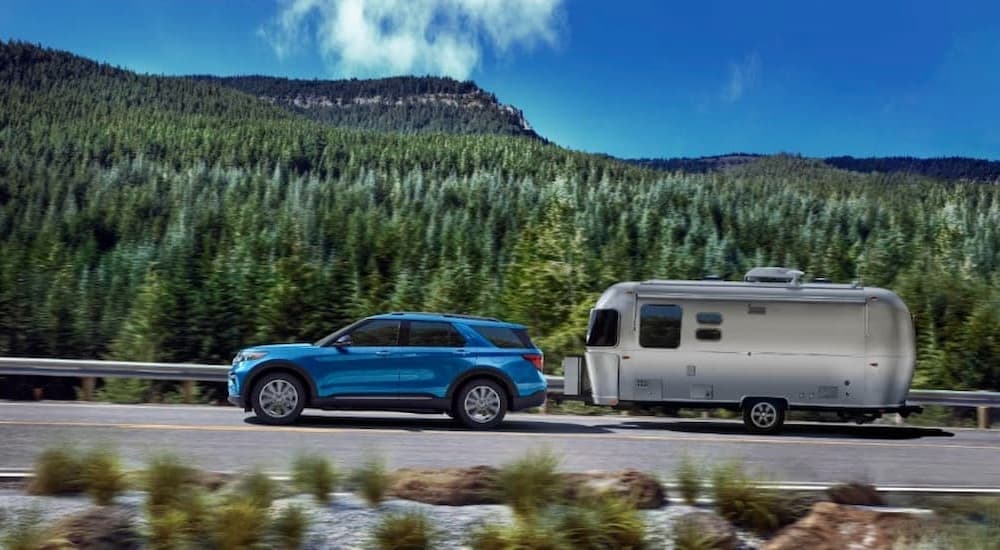As its name suggests, the Ford Explorer is designed to tackle weekend getaways, road trips, and even off-road adventures when properly equipped. But not everyone who’s looking at a rugged SUV like this wants to get off the grid. Many modern drivers want to take the convenience of technology with them wherever they go. Whether you’re a parent looking to keep your little ones entertained on the way to school or an avid road tripper who appreciates the extra confidence that driver assistance tech can provide on an hours-long journey, the latest features can come in handy.
With such a wide variety of people looking to make use of automotive tech, vehicles like the Explorer need to cover a lot of bases in order to please everyone. So what does the 2023 Ford Explorer have to offer those who put high-tech features on the top of their priority list? Let’s delve in and take a look. Inside and out, on-road and off, there are plenty of different things to cover.
Infotainment
When you think about technology in your car, the infotainment system is probably the first thing that springs to mind. The 2023 Explorer comes standard with Ford’s Sync 3 system across all trim levels. The system is compatible with a variety of in-vehicle apps, is capable of providing turn-by-turn navigation, and allows you to control it using voice commands for hands-free operation. You can install Sync 3 software updates over Wi-Fi, making it easy to keep up with the latest tech.
In addition to its own features, Ford also partners with other brands to provide a wider array of options. For instance, most tech-savvy drivers are probably familiar with Apple CarPlay and Android Auto, both of which come standard on the 2023 Explorer. These systems allow you to connect your smartphone to a vehicle’s interface and control compatible apps through the vehicle’s touchscreen, steering wheel controls, or voice commands. You can also use the Ford+Alexa app to access voice navigation, control supported smart-home devices, and even shop on Amazon while en route. All Explorers feature a 10.1-inch touchscreen that makes it easier to see information and camera views at a glance.
Other features aren’t standard across the lineup, instead serving as incentives for drivers to upgrade to higher trim levels. For instance, an available wireless charging pad that allows you to keep your devices charged cord-free. Audiophiles have two different premium B&O sound systems to choose from: one with 12 speakers and one with 14. Both of these include a subwoofer.
Connected Features
Many automakers have been offering app-connected features recently, and Ford is no exception. Explorer drivers can use the FordPass app to access remote features, allowing them to start and stop the engine, lock and unlock the doors, and locate the vehicle using their phones. The app can also be used to check diagnostics like fuel level, tire pressure, and oil life from afar. If you need maintenance, you can get a reminder and even schedule service directly through the app. Ford also uses its app to offer roadside assistance. If you want to troubleshoot an issue yourself, you can access the owner’s manual through the app or use the FordGuides service to get support via phone or live chat.
Safety
One of the best things about modern automotive tech is that it’s come a long way in helping drivers stay safe on the road. Like most vehicles these days, the 2023 Explorer has plenty of driver assistance features that can provide useful warnings and even take over some functions with automatic systems so that you can keep your focus on the road ahead. Let’s take a look at some of the safety tech you can find on this SUV.
- Automatic high beams switch between your normal headlights and your brights based on oncoming traffic and other lighting conditions.
- The blind spot information system senses when vehicles have entered your blind spot and gives you warnings if you try to change lanes while your blind spot is occupied.
- Cross-traffic alert lets you know when cars are coming up behind you while you’re backing out of a parking space.
- Pre-collision assist uses sensors to detect imminent collisions between you and a vehicle or pedestrian in front of you. The system gives you warnings and can also apply automatic emergency braking if you don’t react in time or provide supplemental braking if you don’t brake hard enough.
- The lane-keeping system keeps track of your Explorer’s position in its lane. It can alert you when you’re starting to drift past the lines. If you drift too many times in a set period, you’ll get a special alert letting you know that you should probably pull over and take a break.
- Adaptive cruise control works like standard cruise control when you’re on the open road, keeping you at a set speed. But if traffic ahead of you slows down, then the system will slow down, too, keeping you a set distance from the vehicle ahead of you. In stop and go traffic, the system can even get you to a complete stop when necessary and will accelerate back up to your set speed when it’s safe to do so.
- Side-wind stabilization works to keep you on course in the event of strong gusts of wind.
Exterior
Adaptive LED headlights are available on the Platinum trim of the Explorer. These high-tech headlamps shift the light where you need it, turning their direction in sync with your steering wheel so that you can more easily see around tight turns on dark nights. Walk around to the back of the vehicle, and you’ll find a power liftgate that can open and close at the push of a button, making the cargo area easier to access when your arms are full.
Towing
When properly equipped, the 2023 Explorer can tow up to 5,600 lbs. While a high towing capacity certainly comes in handy on a family camping trip or during a move, carrying that much weight can also make driving more difficult or even dangerous. That’s why automakers like Ford offer several tech features that are specifically designed to make towing easier and safer.
Trailer sway control, which uses braking and engine power adjustments to help you stay in control, comes standard on the Explorer. The terrain management system also comes standard across all trims. In addition to modes that help you tackle off-road trails, keep you stable on slippery roads, and prioritize fuel economy, there’s a tow/haul mode that optimizes the vehicle’s settings for carrying heavy loads, so you can drive with confidence.
Hybrid
The Explorer’s hybrid powertrain, available on the Limited and Platinum trims, uses the latest battery technology to provide improved range and fuel economy, compared to Explorers with traditional powertrains. Properly equipped, a hybrid Explorer can provide up to 28 MPG on the highway, according to the EPA, and has a total range of 486 miles. The hybrid model also provides plenty of power, bringing 318 horsepower and 322 lb-ft of torque to the table, while the base 2.3L I-4 engine produces 300 horsepower and 310 lb-ft of torque. Those stats allow the hybrid Explorer to tow up to 5,000 lbs with the Class IV Trailer Tow Package.
A Well-Rounded SUV
The Explorer’s well-rounded suite of tech features makes it a good jack-of-all-trades vehicle. Its infotainment setup appeals to road trippers, its trailering tech makes it a good vehicle for outdoor adventures, and its safety features come in handy just about anywhere, from busy highways to unlit rural roads. While the Ford Explorer nameplate is getting up there in years, having been around since 1990, the newest model is definitely keeping up with the times and appealing to modern sensibilities.







